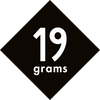Decaf vs. low-caf
Coffee is healthy - this has long been an undisputed fact - and has various positive properties and effects on the human body. The coffee bean has over 1000 different antioxidants. They can be absorbed by the human body particularly well and protect the cells from damage, but also regulate blood sugar levels. So regular drinking of coffee protects the body from disease.
Too much coffee, however, may have quite negative effects. If you drink a lot of coffee and your body is not accustomed to the consumption of caffeine, it is possible that he reacts very sensitively: Including nervousness, sleep disturbances and in the worst case even anxiety disorders. Especially people with elevated blood pressure should pay particular attention to their coffee consumption.
But decaffeinated coffee is not automatically healthier, this depends significantly on the decaffeination method used. Until now, there was little choice here. But recently, more and more low-caf variants are becoming popular on the market. These are coffees that naturally contain only a very small amount of caffeine. Decaffeinated coffees are, in contrast, normal Arabica coffee varieties, which are processed by an additional procedure that removes the caffeine from them.
Decaffeination - how does it work?
There are several methods to extract the caffeine from the coffee bean. The best known are the direct and indirect methods, the carbon dioxide method (or CO2 method), and the Swiss Water method, which is probably the best method for preserving flavor, but is not particularly environmentally friendly or sustainable in that sense due to the large amount of water used. It is difficult to say whether decaffeinated coffee is healthier or unhealthier than conventional coffee. Depending on the process used, decaffeination can have different effects on the compatibility of the coffee. For example, some processes use dichloromethane as a solvent, which can have a harmful effect on health. However, the decaffeinated coffee must comply with strict limits in this respect in order to avoid this. Other decaffeination processes, on the other hand, are completely harmless to health and can even make the coffee more digestible. In order to be considered decaffeinated according to European guidelines, the coffee that was decaffeinated may only contain a maximum of 0.1%.
What is low-caf coffee?
Low-Caf coffee varieties naturally have a low caffeine content. Unlike decaffeinated coffees, they do not have to go through an additional process in which the caffeine is removed from them. This is because caffeination also removes valuable flavors from the coffee bean that we would actually prefer to have in our cup later. Laurina is a special coffee variety due to its extremely low caffeine content. It was discovered in the 18th century and originally comes from the island of La Réunion, in the Indian Ocean. The variety is also called Bourbon Pointu, after the island's former name "Bourbon" and the plant's elongated, pointed coffee beans. The caffeine content of the Laurina bean is naturally very low - it is only 0.3%-0.7%. By comparison, the average caffeine content of an Arabica coffee bean is about 1.6%. Unlike decaffeinated coffees, these beans do not need to be decaffeinated by a special process (Decaf vs. Low-Caf). Decaffeination removes other substances from the bean besides caffeine that we would rather keep: for example, great flavors. That's why it's hard to find a good Decaf coffee - most of the time, decaffeinated coffees taste a little flat. The low caffeine content of the plant also has drawbacks, because caffeine is a natural insecticide. The more of it a plant has, the less susceptible it is to pests. Its bitter compounds act as a deterrent. Because the Laurina variety is so low in caffeine, pests give the sensitive plant a hard time. The general yield is also very low. As a result, only a few farms grow the variety. So it is a real challenge to get these rare beans.
The most famous variety - Laurina
The beans of our La Escondida Laurina were processed using the honey process. The beans are shelled, leaving the sticky parchment skin still on the bean. For the first two days, the beans are spread out on plastic sheets to dry the sticky layer before we prepare them on African beds. Here the beans are moved often (3 - 4 times/day). In the following 12 to 15 days they will be here in partial shade until the humidity has dropped to 12%. The total drying time is about 14 to 16 days.
We have made you curious to try a low-caf coffee? Then try our La Escondida Laurina Low-Caf!




